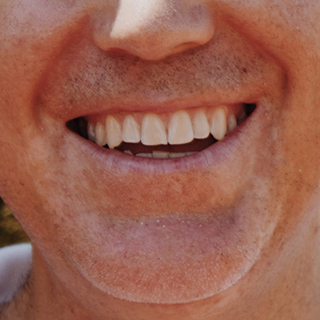What are the Causes of Chipped Teeth?
There are many ways that a person can break a permanent original tooth. When a chip occurs on the chewing surfaces of the flat teeth in the back of the mouth, that means a broken cusp has happened. No matter where the tooth break or crack occurs, a dental professional can help rectify the dental problem and inform you about possible cosmetic dentistry treatment options.
The best method of treating damaged teeth is to prevent dental injuries in the first place, if possible. Craze lines, which are cracks in tooth enamel that are relatively harmless, may also appear because of the following reasons.
These are some of the ways that cracked teeth or a chipped tooth can happen, and habits to avoid:
Tooth decay and cavities may make the teeth weaker and more susceptible to damage
Poor dental care that leads to thin tooth enamel and gum disease
Not wearing a protective mouth guard during rough sports
Using the teeth to open bottles or as tools
Chewing on ice or hard candy
Grinding the teeth
Nail biting
What are the Signs & Symptoms of a Chipped Tooth?
Certain indicators can help you determine if you have a damaged tooth that needs treatment. Of course, making an appointment at a local dental office can confirm the presence of tooth damage. However, certain chips might be so minor that they escape your senses.
Signs such as the following may indicate some sort of problem with a cracked dental filling or broken tooth:
Tooth sensitivity - If you experience sudden pain when drinking beverages of extreme temperatures or while eating hot and cold foods, it may indicate dental problems
A misaligned bite - Discovering that the teeth in your upper and lower jaws no longer seem to fit together like comfortable puzzle pieces when you close your mouth might be indicative of a broken tooth
Sharp edges - Feeling new jagged edges when running your tongue across your teeth - or experiencing cuts on the insides of your cheeks - could mean that you have chipped a tooth
Home Remedies: What to Do About a Broken Tooth
There are times when a cracked toothbecomes apparent, and even if you've already contacted a dental professional, you may not be able to see the dentist right away. In the interim, there are certain actions you can perform to help increase the chances of saving your tooth and preventing further damage while waiting hours or even days to get to the dentist.
Instead of attempting to repair the broken tooth yourself with dangerous and toxic DIY bonding material at home, leave most of the dental repairs to the professionals. In the meantime, while waiting to see a dentist to fix your broken tooth, perform the applicable tasks:
Swish warm salt water around your mouth to cleanse the area
Gather any broken tooth fragments and place them in milk or saliva until you visit your dentist's office
Use over-the-counter pain relievers containing ibuprofen or acetaminophen to help alleviate discomfort
Cover jagged edges with safe materials such as dental wax, dental cement, or sugar-free gum to help prevent cuts
Apply pressure to any bleeding portions of the mouth with clean gauze material
Stay away from eating hard foods and avoid biting nearby the damaged tooth area
Apply an ice pack to reduce pain and swelling, but not directly atop the broken tooth or any exposed nerve endings
Treating Chips and Cracks: In Office and At Home
Upon being examined by a dental professional, you will learn about any number of the following options that can help your specific case:
Dental Bonding
Dental bonding involves fixing damaged teeth with a plastic resin material that is digitally altered to match the color of the original tooth being repaired. Bonding is not only used to repair chipped teeth but can also be utilized to transform shorter teeth into longer ones or to fill cavities less noticeably than using metal fillings.
Dental Crowns
Dental crowns and dental implants are used to strengthen broken teeth or replace lost teeth. While dental crowns fit atop small or split teeth like a little hat, dental implants adhere to crowns that fill empty spaces caused by missing teeth and attach directly to the jaw bone. Both options can help damaged teeth appear more aesthetically pleasing by hiding discolored or cracked teeth.
Veneers
Dental veneers are comprised of thin composite resin and tooth-colored materials such as porcelain veneers, which easily cover chipped or stained teeth.
Root Canal
According to the American Association of Endodontists, a root canal treatment can help tremendously when a tooth has been damaged or experiences decay. The root canal procedure may help save an original tooth, as well as reduce pain when tooth damage reaches underlying nerves and blood vessels.
A person might choose to have a root canal procedure instead of tooth extraction to save a damaged or broken tooth due to several advantages. Saving a damaged tooth or one that has experienced a bad break allows the patient to resume effective chewing habits with a natural-colored tooth while enjoying all the same biting sensations and force that they are accustomed to having. It can also protect nearby teeth from too much strain by offering the support the tooth was intended to bear before being broken.

